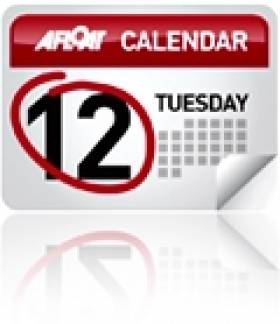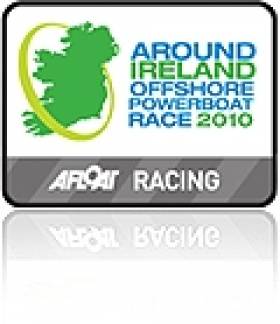Displaying items by tag: Galway
VOR Organiser to Receive Honorary Doctorate
Volvo Ocean Race organiser John Killeen is to be honoured by NUI Galway this June with an honorary doctorate.
The Let’s Do It Ireland Chairman, who was responsible for bringing the hugely successful Volvo Ocean Race to Galway, is on a list that includes Seán Ó’hUiginn, the Irish diplomat and former Ambassador to the US and Germany, VHI chairman Bernard Collins, and Anne Maria Dennison, head of the Irish Countrywoman’s Association.
The ceremony will take place on Friday June 25th.
Killeen is also CEO of the Colas Group, chairman of the Galway Docklands Redevelopment Committee and a former president of the Academy of Engineering and the Institution of Engineers of Ireland.
Spiddal Open Day this Sunday
The club is recognised by the ISA, and runs ISA-approved youth training courses for its members every year, ranging from an introduction to sailing to more advanced techniques. Its course programme this year runs from 28 June to 9 July.
Weather permitting, there will be opportunities to try your hand at crewing or helming in Spiddal harbour from 2.30pm to 4.30pm.
Galway Plays Host to Around Ireland Powerboat Race
Galway will play host yet again to a major water sport event this June with 3 events in one starting with the PI Powerboat Grand Prix of Galway on the bay 05-07 June, the start of the Around Ireland Powerboat Race on 07 June and the P750 Zapcat Challenge in the Bay 12-13 June. Alongside the activity on the bay, Galway will yet again host a major festival in the Race Village at Galway Harbour and in Salthill with free concerts, amusements, bars, food and crafts. www.aroundireland.org www.aroundireland.org
Britain’s most exciting new motorsport, the Powerboat P1 SuperStock Championship, is the newest addition onto the heavyweight bill for the Around Ireland Offshore Powerboat Race, beginning in Galway Bay on 5 June. Kick-starting the bank holiday weekend celebrations, round two of the 2010 SuperStock Championship will see some of the UK’s biggest thrillseekers tackle the challenging elements of the Atlantic Ocean, which is certain to provide an unforgiving racecourse for the Irish powerboat racing festival.
"The event will showcase the beauty of the Irish coastline and present our teams with a fantastic opportunity to race in the heart of an effervescent city, watched by thousands of powerboat racing fans.” Stated SuperStock Championship spokesman, Sam Feasey
Bringing additional coverage to Galway, the Powerboat P1 SuperStock Championship will be screened on British Eurosport, further highlighting Galway’s credentials to host world class events.
Following on from the success of the Volvo Ocean Race’s stopover in Galway in 2009, Feasey added that Powerboat P1 is confident that its racing fleet will augment Galway’s
passion and pride for its maritime activity.
Consisting of two race classes, 150 and 300, up to twenty identical powerboats measuring between 21 and 27 ft respectively, will entertain locals, tourists and motorsports fans for three enthralling races on Saturday, Sunday and Monday.
On Bank Holiday Monday 07 June 2010 at 0900, offshore powerboats will leave Galway Bay in pursuit of the Around Ireland Offshore Powerboat title. The race will circumnavigate the entire coast of Ireland and will be the toughest endurance powerboat race on the International circuit.
The 5 days of racing will be a true test of man and machine and there will be 5 stages with events at each of the stopovers:
Galway to Killybegs (07 June)
Killybegs to Belfast (08 June)
Belfast to Waterford (09-10 June)
Waterford to Fenit (11 June)
Fenit to Galway (12 June) Fenit Sea Breeze Festival will run Friday 11- Sunday 13 June
Onshore in Galway a festival programme of music and entertainment, and food and craft markets will ensure fun for all the family against the backdrop of the programme on the water. Likewise at each of the stopover stages similar festival programmes will greet the race on arrival and ensure excitement and drama for each re-start.
The Galway Race Village will open from 1000 -2230 daily and there is a full programme of entertainment including the now famous Crystal Swing on the main stage on Sunday 06 June at 1730. In total over 20 acts are scheduled to perform over the 8 day festival including - the Cartoon Thieves, the Timber Tramps, Joe Furey and The Hayride and Emmet Scanlan and What the Good Thought
For the finale on 12 June, prepare to be amazed and in awe at the P750 Cross Border Championship and make sure you are at the dock to welcome back the winner of the Around Ireland Powerboat Challenge on Saturday 12 June.
Ballinduff Bay Watersports Club
Ballinduff Bay Watersports Club
Ballinduff Bay Watersports Club, c/o Keith Collins, Grange, Corrandulla, Co Galway. Tel: 086 601 9862, email: [email protected]
Have we got your club details? Click here to get involved
Corrib Rowing and Yachting Club
Welcome to the CRYC web site which we hope will be of interest to members and visitors alike. Established in 1864, the CRYC is one of the oldest inland waterway clubs in the British Isles. Located in the centre of Galway City it continues to provide facilities for water-based recreational activity for almost 300 members.
Corrib Rowing & Yachting Club, Earls’ Island, Distillery Road, Newcastle, Galway. Tel: 091 564560, email: [email protected]
(Details courtesy of Corrib Rowing & Yachting Club)
Have we got your club details? Click here to get involved































































